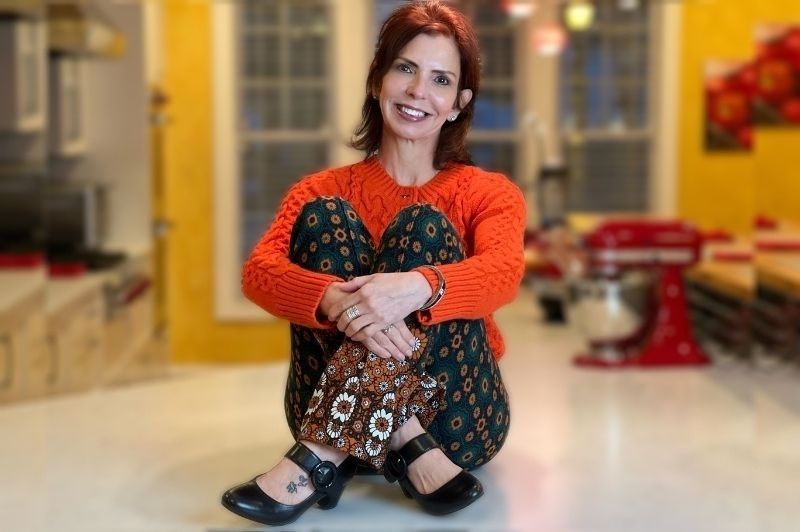Home Kuel Thought Leader: Lori Roach
Are you familiar with the term “Hygge”?
It’s been trending for a few years now (in some circles) and is a wholly undiscovered concept for many people. If you are familiar with the term, it’s still likely that you’ve heard it woefully misused and misapplied!
Over the last few years, the world has felt smaller due to the impact of the internet and, of course, COVID. We’ve found ourselves searching for new ways of living, and one way to do that is to explore the lifestyles of cultures not our own.
“hygge requires a certain slowness, an awareness, and the ability to just be mindful and present. “
Along came the popularization of the Danish term Hygge, followed by a slew of other lifestyle ideas (and, perhaps, ideals) that we can incorporate into our homes and lives.
Buzzwords From Around The World:
Hygge:
In essence, hygge is defined as creating a warm, welcoming atmosphere and enjoying the good things in life with good people. There is a strong sense of mindfulness, of appreciation, of taking notice of our surroundings.
The warm glow of candlelight is hygge.
Cuddling under a warm blanket with a cup of hot tea and a good novel is hygge.
Sitting around the table late into the evening convivially discussing the meaning of life with friends and family – hygge.
On the other hand, things cannot, in and of themselves, be hygge. You can’t go to the store and buy a hygge candle, and you cannot eat hygge food.
That’s because hygge requires a certain slowness, an awareness, and the ability to just be mindful and present. Hygge is a feeling. If you don’t feel hygge, you probably aren’t using the word right.
Koselig:
Koselig is a Norwegian concept that’s very similar to hygge. Both concepts are all about feeling cozy and comfortable and finding joy in the little things. Koselig puts a greater emphasis on socializing as well as creating a connection with nature and the outdoors.
Rearranging your family room to hold more chairs for friends.
A family dinner on the patio.
A potluck meal where everyone clusters around the kitchen island and helps with the preparation.
“Koselig is a Norwegian concept that’s very similar to hygge.”
These are examples of Koselig.
Friluftsliv:
Friluftsliv is a Scandinavian term that translates to “open-air living”.
Picnics in the yard.
Gatherings of friends around the firepit.
Playing a game in the park.
Frilutsliv encompasses that enjoyment of being outdoors in nature.
For our homes, this can translate to the recent trend of turning our outdoor spaces into true living spaces, complete with couches, dining tables, rugs, and outdoor kitchens. It’s also the idea of bridging the gap between indoors and out by opening windows and doors to let the air flow freely and let the natural light stream in.
Lagom:
Lagom is the Swedish mindset of “everything in moderation”. Think of furniture that is both beautiful and functional, but also minimalistic and not overly embellished. A light, neutral color scheme. A single big accent piece per room. Empty vertical surfaces. Keeping décor simple, practical, and useful.
“In our overly busy world, bringing niksen into our home may seem like a challenge.”
Niksen:
Niksen means to do nothing, to be idle or doing something without any particular purpose. Practicing niksen could be as simple as just hanging around, observing your surroundings or listening to music.
In our overly busy world, bringing niksen into our home may seem like a challenge. But consider a desk to sit at to doodle or color, a hammock, a porch swing. The most comfortable chair to curl up in and nap. The softest, comfiest bedding.
Kintsugi:
In the Japanese tradition of kintsugi, broken pottery is repaired with gold and considered to be more beautiful and special because of their imperfection. Kintsugi tells us that old, well-used and well-loved items are actually far more valuable than anything brand new, and that their flaws and imperfections are part of what makes them so special.
For our homes, then, we should reconsider special ordering everything we place in our homes, and look to family heirlooms, vintage pieces, and secondhand items to create character and add warmth to our decor.
How do you feel about these “buzzwords” and how they reflect on our modern culture? Could you adapt the principals of Hygge, Lagom, or Kintsugi to your life and your home? What would that look like for you?
Did you enjoy this article? Become a Kuel Life Member today to support our Community. Sign-up for our Sunday newsletter and get your expert content delivered straight to your inbox.

Lori Roach’s professional career has encompassed convention management, corporate training, education administration, and – most important to her – full-time motherhood. As she entered her mid-fifties, she found herself moving to a new city – leaving her friends and job behind just as she became an empty nester. Seeking both purpose and a new challenge, Lori started a blog, CircleSquareOval. Her goal is to help every woman “shape a modern midlife” by focusing on self-discovery, confidence, and connection to the world around them.
A bit of a gypsy at heart, Lori has relocated twenty-two times in her life, making her something of an expert on settling into a new space, unpacking and decorating quickly, and creating a feeling of “home”. She joins Kuel Life as a Home Category Expert.
You can read more from Lori at CircleSquareOval and find her on Instagram, Twitter, and Pinterest as well.























